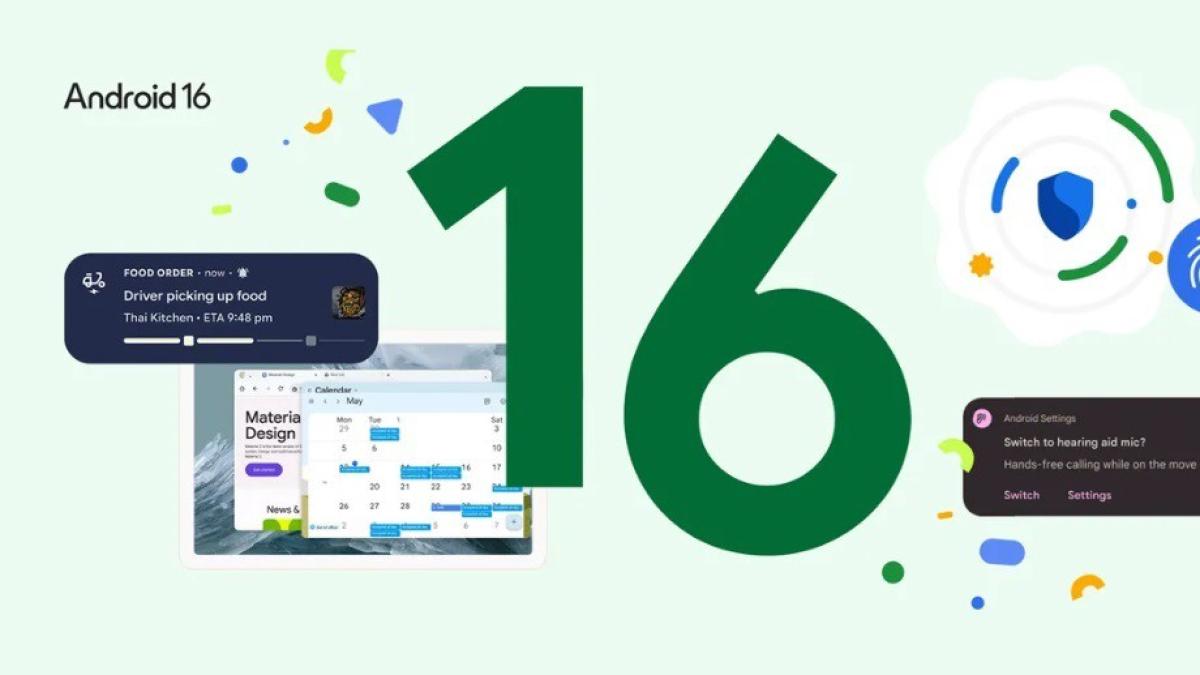- Android 16 introduces key security improvements, including alerts for fake mobile networks and Advanced Protection against theft and fraud.
- The Phone app gets a complete overhaul with the Material 3 Expressive interface, adding more tabs and simplifying navigation.
- The update is already available for Pixel devices and will gradually roll out to brands such as Samsung, Xiaomi, Motorola, and others.
- The rollout fixes initial issues like the back-button bug and adds new customization layers on certain manufacturers’ skins.
 Android 16 is here, and its arrival marks a new chapter for millions of smartphone users around the globe. Although at first glance it may look like a modest upgrade, Google has put serious effort into strengthening security and refining the user experience while ironing out issues inherited from previous releases. From changes to how phone calls work to advanced defenses against digital threats, the new version is steadily rolling out to today’s most popular devices.
Android 16 is here, and its arrival marks a new chapter for millions of smartphone users around the globe. Although at first glance it may look like a modest upgrade, Google has put serious effort into strengthening security and refining the user experience while ironing out issues inherited from previous releases. From changes to how phone calls work to advanced defenses against digital threats, the new version is steadily rolling out to today’s most popular devices.
The update debuted on Google Pixel phones, which traditionally get Android’s major innovations first. Other manufacturers—Samsung, Xiaomi, Motorola, OPPO, Realme, OnePlus, and Vivo—are already preparing their own builds with custom skins and features. The rollout will be gradual and will vary by model and each brand’s update policy.
Security improvements: protection against sophisticated threats
One of Android 16’s biggest leaps forward is in the area of security. Google has added the ability to detect fake mobile networks, known as “Stingray towers.” These devices—technically called IMSI catchers—impersonate legitimate cell sites to intercept communications, grab identifiers such as the IMEI or IMSI, and even track users’ locations without their knowledge.
Whenever an Android 16 device senses that it has connected to a suspicious or unencrypted network, you’ll see a warning in the notification shade and Security Center. There’s also a new “Mobile Network Security” panel where you can disable less-secure technologies such as 2G, lowering your exposure to interception. Note, however, that this option appears only on phones with compatible hardware (modems supporting IRadio HAL 3.0), so not every device will have the feature from day one.
Beyond that, Android 16 introduces a layer called Advanced Protection, which bundles several key safeguards into a single hub:
- Motion-based lock to protect the phone if it’s stolen.
- Auto-reboot after prolonged inactivity to thwart unauthorized access.
- Scanning for insecure Wi-Fi networks.
- Blocking potentially dangerous apps and websites.
- Automatic detection of phone-call spam.
All these tools run quietly in the background, so you don’t have to change the way you use your phone—yet they raise your overall defense level substantially.
Mastering the New Android 15 Linux Terminal: Features, Setup, and Practical Use Cases
Phone app overhaul: cleaner, more practical interface
Android 16 isn’t just about security: the Phone app gets a significant makeover adopting Google’s new Material 3 Expressive design. Six main tabs now organize its functions—Home, Dialer, Voicemail, Contacts, Favorites, and Recents.
In the “Home” tab, your favorite contacts appear as large icons, with the recent-calls log right below for quick access. Missed-call and spam filters have been reorganized to make them easier to reach while clearing space at the bottom of the screen.
Visual tweaks include angular shapes for profile photos and separate, chronologically ordered call entries instead of grouped lists. The gesture for answering or rejecting calls now moves horizontally, helping reduce accidental touches.
Bug fixes and post-update issues
The early rollout has triggered some glitches and complaints. Users have reported common hiccups such as gesture-navigation freezes, alarms that fail to ring, or system apps crashing unexpectedly. One of the most widespread bugs involved the back-button and edge gestures, whether you use on-screen buttons or swipe navigation. Google has released minor patches that resolve most of these problems on compatible Pixel phones.
More serious issues—like SIM mis-detection or GPS failures after updating—have been rarer but still worrisome. It’s wise to watch for future security updates and always back up your data before any major system upgrade.
Availability and devices getting Android 16
The rollout starts with the latest Google Pixel models (Pixel 6 onward) and will reach other brands over the coming months. Each OEM’s timeline differs, but provisional lists already point to phones and tablets slated for the update. Confirmed or highly likely candidates include:
- Google Pixel: 6, 6 Pro, 6a, 7, 7 Pro, 7a, 8, 8 Pro, 8a, 9, plus Fold and Tablet variants.
- Samsung: Galaxy S25, S24, S23, S22, S21 FE, Z Fold/Flip lines, Tab S10/9/8/6, A73, A56–A14, M56–M05, F56–F05, C55, XCover 7, and others.
- Motorola: Razr (2025/2024/60/50), Edge (2025/60/50/40 Pro), Moto G (Power, Stylus, G86–G55), ThinkPhone 25.
- Xiaomi, Redmi, and POCO: Xiaomi 15/14/13, Pad 7/6/6 S, Redmi Note 14/13, K80–K60, 14C/13C, Pad 2/SE, POCO F7/F6/X7/X6/M7/C75, and variants.
- OnePlus, OPPO, Realme, Vivo, Nothing, and others: most of their flagship and mid-range devices from the past two years are generally in line for the update.
Each manufacturer will publish its official lists in the coming weeks. Typically, the newest devices get Android 16 first, followed by mid-ranges and, finally, tablets or more affordable lines.
If your phone is eligible, simply open Settings ➜ System Updates and check whether the download is ready.
All in all, Android 16 is a significant step toward a more secure, modern platform prepared for emerging digital threats. At the same time, it improves everyday tasks like calling and navigating, making it one of the most robust releases in recent years—focused on features that truly impact daily use.